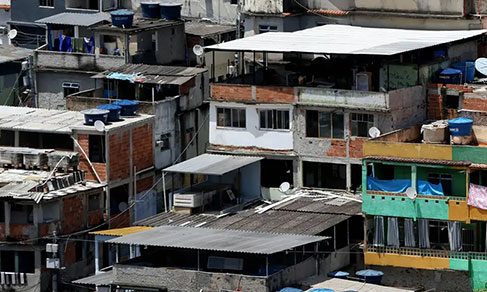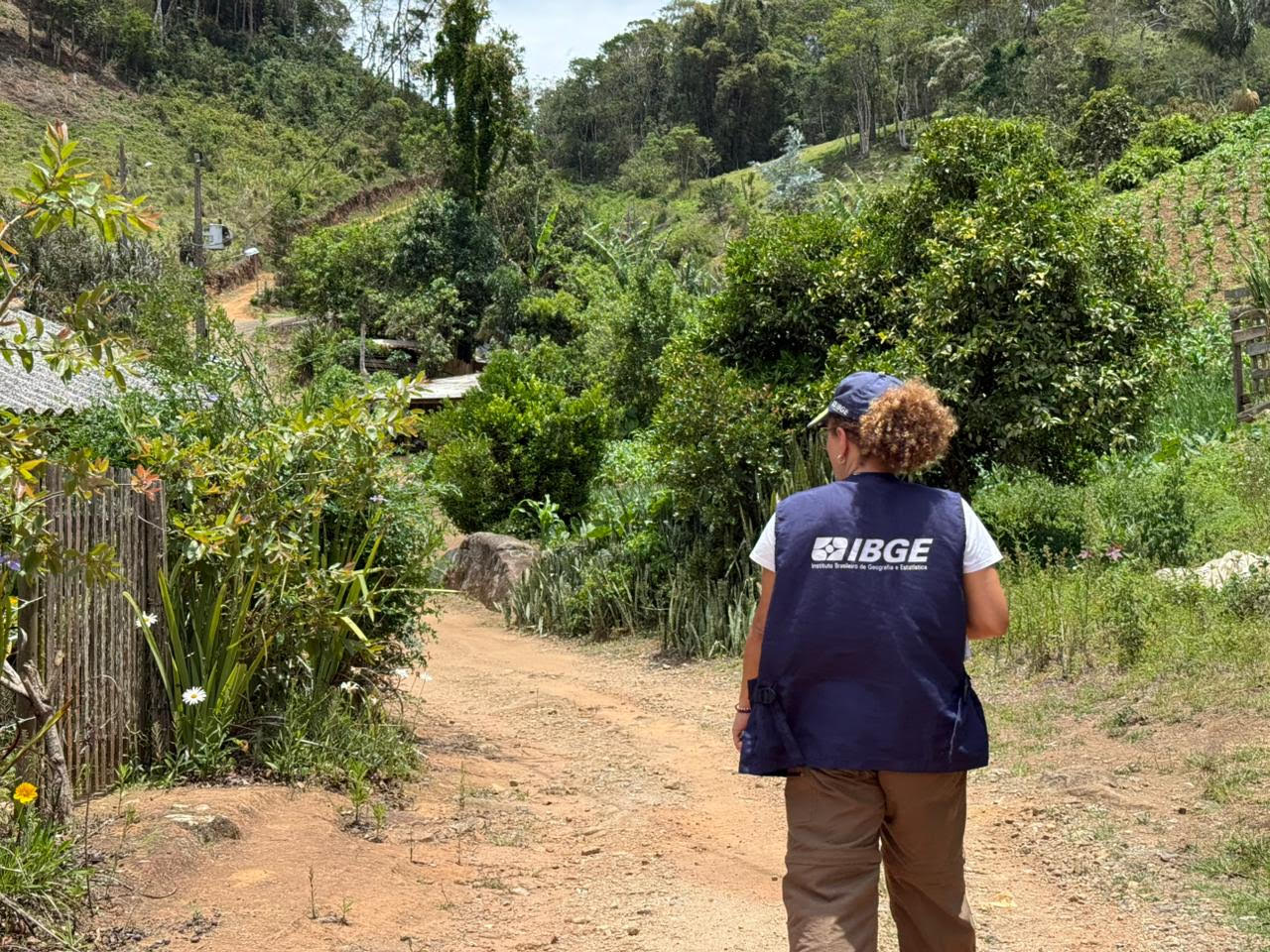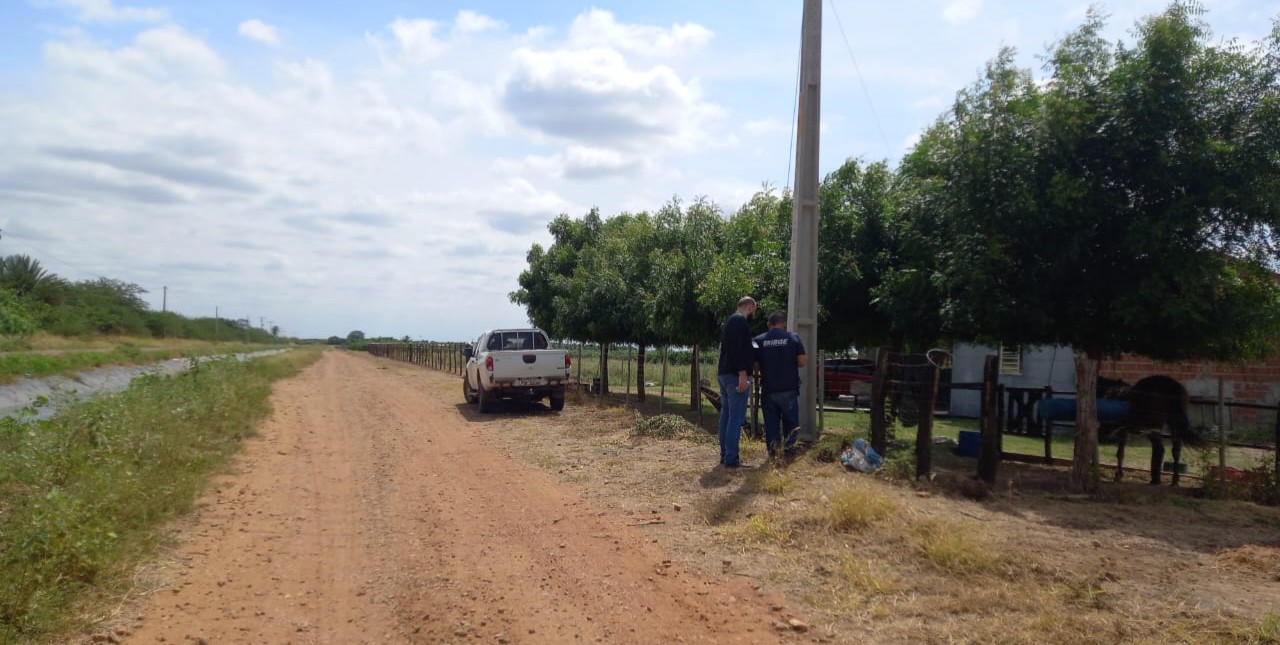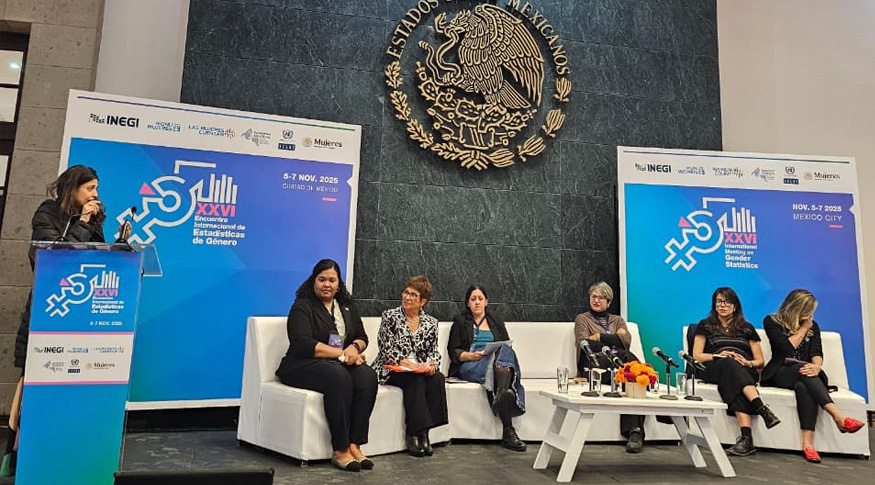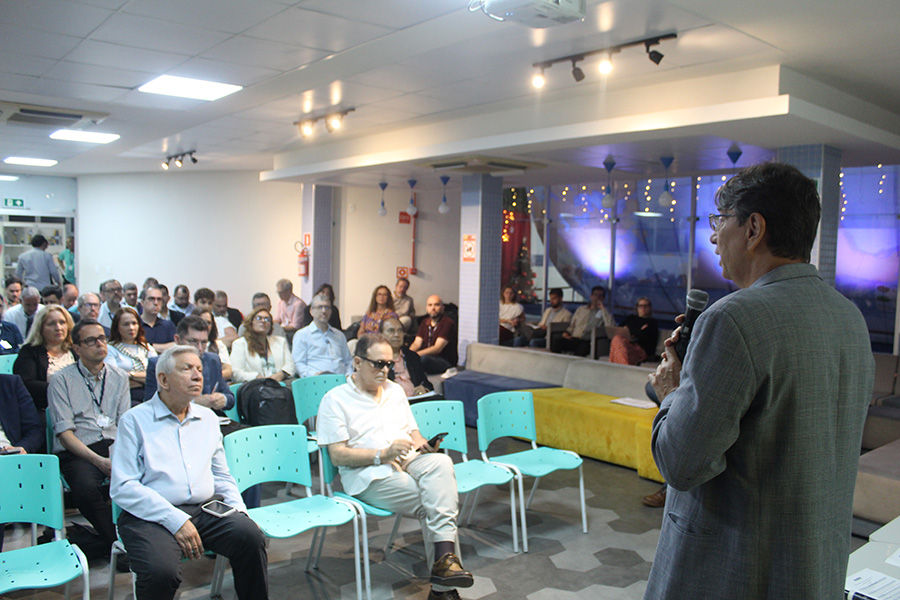Gender Statistics
Black and brown women spend more time in household tasks, participate less in the labor market and are more affected by poverty
March 08, 2024 10h00 AM | Last Updated: March 12, 2024 05h28 PM
Highlights
- In 2022, while women dedicated, on average, 21.3 weekly hours to household tasks and/or care of persons, men spent 11.7 hours. Black and brown women dedicated more 1.6 hours per week in these tasks than white women.
- The participation rate of women in the labor market was 53.3%, whereas that of men was 73.2%. It is equivalent to a difference of 19.9 percentage points (pp). Moreover, the informality rate of women (39.6%) was higher than that of men (37.3%), and the difference between black and brown persons (45.4%) and white men (30.7%) in this indicator hit nearly 15 pp.
- Also in 2022, earnings of women, on average, was equivalent to 78.9% of those received by men. In the beginning of the time series, in 2012, that ratio was estimated at 73.5%. In 2022, the biggest difference in earnings was in the group of sciences professionals and intellectuals: they earned the equivalent to 63.3% of men´s average.
- The proportion of white women aged 25 years and over who completed higher education (29.0%) was twice that reported for black and brown women (14.7%).
- Nearly 32.3% of the Brazilian women were below the poverty line, i.e., they had a per capita household income of up to US$6.85 per day, according to the World Bank. This was the situation of 41.3% of the black and brown women who live in Brazil, against 21.3% for white women.
- With the Covid-19 pandemic in 2020, the maternal mortality ratio grew 29% compared with the previous year, hitting the mark of 74.7 deaths per 100 thousand live births. In the following year, that proportion was of 117.4/100 thousand. The maternal mortality ratio fell in 2022, being estimated at 57.7 per each 100 thousand live births.
- In 2019, considering only the major violence suffered in the last 12 months, nearly 5.7% of the white women reported to have suffered either psychological, physical or sexual violence practiced by either a former or current intimate partner. The proportion was higher for black and brown women (6.3%).
- Although the proportion of female representatives in the Federal Chamber has increased from 14.8% in September 2020 to 17.9% in November 2023, Brazil was ranked in the 133rd position out of 186 countries, below several Latin American countries like Mexico, Argentina, Ecuador and Bolivia.
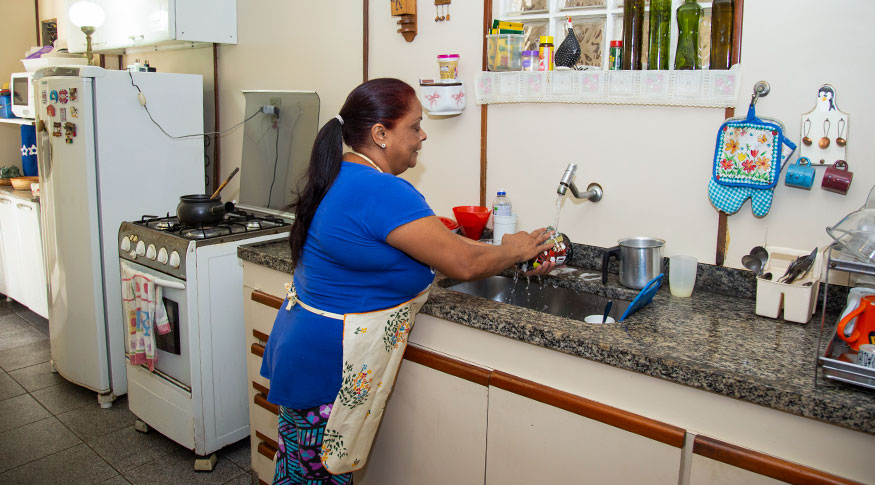
In Brazil, black and brown women are more affected by inequalities in education, labor market, income and political representativeness than white women. They dedicate more time to household tasks and care of persons, they have a lower participation rate in the labor market and a lower percentage among those occupying political offices. In addition, black and brown women represent most of the victims of homicides against women practiced out of home and they have the highest percentage of poor persons. The data are part of the Gender Statistics study, released by the IBGE today (8), International Women´s Day.
The publication brings information that allows an inter-sectional analysis of the inequalities related to the themes economic empowerment, education, health and related services, public life and decision taking, and human rights of women and girls. “Whenever possible, we disaggregate by color or race and Federation Unit in addition to sex, aiming at highlighting other characteristics that, together, can produce specific life conditions for women, producing staggered inequalities,” says Barbara Cobo, General Coordinator of the study.
In 2022, women dedicated nearly twice the time as men to household tasks and/or care of persons. These tasks consumed 21.3 weekly hours of women against 11.7 hours of men. The division by color or race also allows to check that difference among women. Black and brown women spent more 1.6 hours per week in these tasks than white women. Men did not show any significant difference in this division. Moreover, the difference between white women and black and brown women increased since 2016, when the time series of this indicator began.
The distance is bigger among women when data by income class are noticed. They were more 7.3 hours of dedication to household tasks among those 20% with lower earnings than those 20% with higher earnings. This indicator did not show any significant difference among men as well.
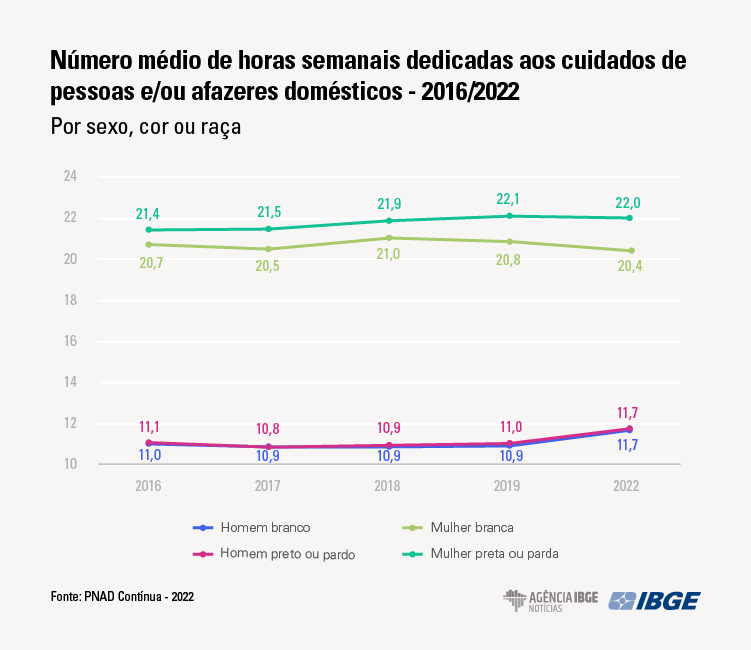
This information is particularly important as it is related to the insertion of women in the labor market. While they are more than half persons at working age, the participation rate of women in the workforce was 53.3%, whereas that of men was 73.2%, which represents a difference of 19.9 percentage points (pp). “There is a relation between this difference and the fact that women dedicate more to household tasks and care of persons. It prevents that they participate more in the labor market,” explains André Simões, an analyst of the study.
Nearly 23.0% of the women aged between 15 and 24 years were not training, employed or looking for a job. The proportion was higher among black and brown women: 26.6%. In the case of men within this age range, that figure was 14.6%.
“Black and brown women are those who less participate in the labor market, who more dedicated hours to household tasks and care of persons and, by means of other indicators, we confirm that they have the worst forms of insertion in terms of compensation and job quality,” analyzes Cobo.
According to the researchers, the time dedicated by women to non-paid household tasks also influences the number of hours worked. In 2022, 28.0% of the employed women worked part-time (up to 30 weekly hours), whereas this proportion was 14.4% among men. The percentage was even higher among women in the North (36.9%) and Northeast (36.5%), beyond that of black and brown women (30.9%) when compared with white women (24.9%). The unemployment rate of the entire female population (11.8%) was also higher than that of men (7.9%).
Another information related to the characteristics of insertion in the labor market is the higher informality rate of women (39.6%) in relation to men (37.6%). This type of employment, characterized by less access to labor rights, was also more present among black and brown population than among the white population. The difference between the informality rate of black and brown women (45.4%) and of white men (30.7%) hit nearly 15 pp.
Women have higher school attendance and schooling level than men
When analyzing the data of school attendance in the appropriate age, the researchers noticed that the differences between men and women grow as schooling advances. In 2022, boys and girls aged between 6 and 10 years had the same percentage of age-step appropriateness in the initial years of the primary education (91.9%).
Over the years, women surpassed men in school attendance: nearly 92.5% of the girls aged between 15 and 17 years studied, in that same year, against 91.9% of boys in the same age range. Among the population aged between 18 and 24 years, the proportions were 32.6% for women and 28.1% for men.
This indicator also shows racial inequality: nearly 39.7% of the white women aged between 18 and 24 years studied, whereas this proportion was 27.9% among black and brown women. The lowest percentage was among black and brown men (24.6%), which dropped in relation to the beginning of the time series in 2016 (27.7%). The difference between this population group and white women was 15.1 pp, a distance that grew 50% in relation to 2016 (10.1 pp).
The data also point out that women living in Brazil have, on average, a higher schooling level than men. In 2022, 35.5% of the men aged 25 years and over either were uneducated or have not completed primary education. Among women in the same age range, that proportion was 32.7%. Still within this age group, the percentages of those with complete higher education were 16.8% among men and 21.3% among women.
When considering the racial division, the inequalities are also evident in this indicator: the proportion of white women who had completed higher education (29.0%) was twice that noticed for black and brown women (14.7%). Black and brown men had the lowest percentage among the groups (10.3%), less than half that registered for white men (24.9%). “We noticed that education inequality between men and women was not that bigger than the inequality between white persons and black and brown persons,” says analyst Betina Fresneda.
Another issue pointed out in the study is the barrier for women to access some knowledge areas, like those linked to the exact sciences and to the production sphere. Based on the data of the Census of Higher Education of 2022, the researchers noticed that women prevailed (60.3%) among those completing on-site undergraduate courses, in general, though they represented only 22.0% of those completing in Sciences, Technology, Engineering, Mathematics and interdisciplinary programs in these areas (CTEM). This proportion decreased in the last ten years: in 2012, they were 23.2%.
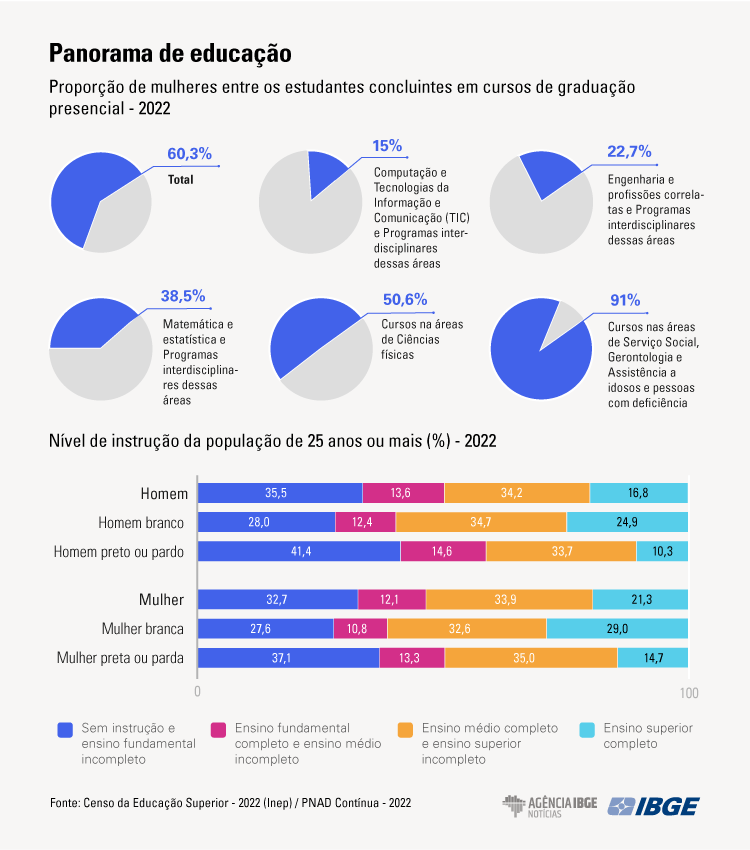
“We did not notice an increase in the female representativeness in these courses over the last ten year, On the contrary, the biggest drop was in the area with bigger difficulty, i.e., that of ICT (Information and Communication Technology) courses, changing from 17.5% to 15.0% of women completing them,” exemplifies Fresneda.
For Barbara Cobo, there is a direct relation between the women dedication to household tasks, which is a reflex of the socialization, and future decisions in relation to studies and profession. “They are conditioning choices: the fact that they are raised to take care makes them select courses that continue to take care when they enter in the labor market, as if it was a female attribution. And the fact that they are not very well represented in the careers and more valued in the market shows this. Moreover, dedicating more time to household tasks means less time to dedicate to the labor market,” analyzes her. The female presence in courses linked to care and welfare, like Social Service, is stronger, hitting 91% of those completing them.
Women remain earning less then men
Although they have, on average, a higher schooling than men, women´s earnings remain low. In 2022, women´s earnings were equivalent to 78.9% of those received by men. In the beginning of the time series in 2012, that ratio was estimated at 75.4%, which means that this distance decreased. In 2022, the biggest difference was in the group of sciences professionals and intellectuals: they earned the equivalent to 63.3% of men´s average. In the group of directors and managers, which shows the highest average earnings in Brazil, they received 73.9% of those received by men. Among the members of the Armed Forces, police and firefighters, women earned, on average, more than men (109.0%). “It is explained by the fact that women are more present in command posts and specialized careers, like physicians and architects,” says analyst Leonardo Athias.
| Total | Man | Woman | Ratio (%) | |
| Age Groups and Major Employment Groups | 2,658.68 | 2,920.29 | 2,303.08 | 78.86 |
| Employment Groups in the Main Job (1) | 7,107.69 | 7,948.19 | 5,870.27 | 73.85 |
| Directors and managers | 5,707.87 | 7,268.08 | 4,600.19 | 63.29 |
| Sciences professionals and intellectuals | 3,400.58 | 3,836.72 | 2,852.48 | 74.34 |
| Secondary education technicians and professionals | 2,114.55 | 2,364.02 | 1,955.50 | 82.71 |
| Administrative support workers | 1,907.52 | 2,373.81 | 1,552.10 | 65.38 |
| Services workers, trade and market salesmen | 1,918.03 | 2,007.71 | 1,416.70 | 70.56 |
| Qualified workers of agriculture, forest, hunt and fishery | 1,999.06 | 2,119.69 | 1,371.38 | 64.69 |
| Qualified workers, workers and artisans of construction, mechanical arts and other professions | 2,158.69 | 2,238.45 | 1,635.96 | 73.08 |
| Machinery and installation operators and assemblers | 1,237.18 | 1,312.85 | 1,156.26 | 88.07 |
| Elementary jobs | 6,029.52 | 5,975.88 | 6,515.76 | 109.03 |
| Source: IBGE. Continuous National Household Sample Survey, 2022 (cumulative from fifth visits). Notes: Values inflated to average reais of 2022. |
||||
Likewise, inequality can be seen among persons who were employed in managerial jobs from the groups of activities in which they were inserted. “We have stronger inequalities in some areas. The biggest of them is in the area of transportation, storage and mailing, in which women earned only 51% than what men earned and, even in the area that had the largest concentration of women, human health and personal care, earnings were also lower, nearly 61% of men´s earnings,” highlights Athias.
“Inequalities in managerial jobs grow with the age of women, i.e., they deepen along their life trajectories, with an impact on their compensation and retirement,” completes him.
According to a study from the National Council of Justice (CNJ), carried out in 2022, the public sector shows strong inequalities as well. In the State Justice, the share of female judges was 38.0%, in the Federal Justice, 31.0%, and in the Superior Court of Justice (STJ), only 23.0%, which, according to Barbara Cobo, refers to barriers to advance in the career. It is called glass ceiling, a metaphor used to explain the difficulties of the female growth in the corporate world.
According to data from the X-Ray Panel of the Federal Public Administration, of the Ministry of Management and Innovation in Public Services, the share of women was 30.7% in higher positions in November 2023.
On the other hand, the proportion of women who were below the parameters established by the World Bank for poverty and extreme poverty was higher than that of men. Below one of the lines, in which persons live with an income of up to US$2.15 per day and are considered extremely poor, were nearly 6.1% of the Brazilian women in 2017. Among men, the proportion was 5.7%. Nearly 32.3% of the women were below the other line, with a per capita income of up to US$6.85 per day. That was the situation of 41.3% of the black and brown women who live in Brazil, against 21.3% of the white women.
Considering the population by age, nearly half of the girls aged up to 14 years (49.1%) lived with this income, the highest proportion among the age groups. The two lines are used to follow up goal 1 (poverty eradication) of the Sustainable Development Goals (SDGs).
Moreover, the indicator that assesses the participation of persons in the labor market with children at home pointed out a female disadvantage as well. The employment-population ratio, percentage of employed persons in the population at working age, was 66.2% for women aged between 25 and 54 years without children up to 6 years old at home, whereas it was 56.6% for those with children. The percentages were 82.8% and 89.0%, respectively, among men in this same age range.
In 2022, maternal mortality ratio falls after two consecutive years of increase
Women´s health was also a theme included in the study. The COVID-19 pandemic caused an increase in the number of deaths and a drop in the number of births, with an advance of 29% in the maternal mortality ratio, which changed from 57.9 per 100 thousand live births in 2019 to 74.7 in 2020. In 2021, it reached 117.4 per thousand live births.
In 2022, the maternal mortality ratio returned to 57.7, standing once again below the SDG goal, which is reducing maternal mortality to less than 70/100 thousand live births up to 2030. Only the North remained above it, with 82.0 deaths/100 thousand live births. In 2022, Amazonas (82.7 per 100 thousand), Roraima (160.4), Pará (79.7), Amapá (80.8) and Tocantins (102.0) in this region remained above the SDG goal.
Between 2010 and 2022, the number of births dropped nearly 10%, which represented less 300 thousand. For the researchers, the zika virus crisis explains the decrease in 2016 and, after growing between 2017 and 2018, they resumed the downward path from 2019 onwards, which suggests a reduction in the fertility. Although the largest number of live births by age group is with mothers aged between 20 and 29 years (share of 49.2% in 2022), it dropped 16.6% between 2010 and 2022. On the other hand, the number of live births whose mothers are women aged between 30 and 39 years (734.5 thousand to 879.5 thousand in 12 years or a growth of 19.7%) and between 40 and 49 years (63.0 thousand to 106.1 thousand birth or an increase of 65.7%) in the same period.
In 12 years, number of births with mothers aged between 10 and 19 years falls 42.9%
It was also possible to check the data on pregnancy in adolescence, which are related to achieving goal 5 of the SDGs (Gender equality). Information from the Ministry of Health´s Information System on Live Births (Sinasc) was used to this analysis. Between 2010 and 2022, the number of births in the group of mothers aged between 10 and 19 years reduced 42.9%. In absolute figures, it represented a drop of 237 thousand births in the period.
Considering this time division, the proportion of births with mothers in this age range reduced among the total of girls and women aged between 10 and 49 years, from 19.3% to 12.3%. Among the Brazilian regions, the North led this percentage (19.7%). Girls aged between 10 and 19 years from the North, Northeast and Central-West were those who showed the highest percentages of births in this age group, indicating less access to information and to services of reproductive and sexual health.
6.0% of women suffered some form of violence from former or current partners
Psychological, physical or sexual violence imposed to women by former or current intimate partners was addressed based on data from the IBGE´s National Survey of Health (PNS). In 2019, last edition of the publication (also limited to the major violence in the last 12 months), the proportion of women aged 18 years and over who faced at least one of these forms of aggression in the 12 months that preceded the interview was 6.0%. This proportion was higher among the group of younger victims and decreased with the age: between 18 and 29 years (9.2%), between 30 and 49 years (8.2%), between 50 and 59 years (4.1%) and 60 years and over (2.2%). Among the Federation Units, the highest percentages were registered in Roraima (8.5%), Sergipe (8.4%) and Mato Grosso do Sul (8.2%).
The differences by color or race are present as well: while 5.7% of the white women interviewed reported to have passed through one of these forms of violence, this proportion was 6.3% for black and brown women. Another inequality is evident when the rates of knavish homicides per each 100 thousand women by the place of occurrence are analyzed.
“Most homicides occurred away from home. The rates of homicides that occurred at home remained stable and without much difference for white women and black and brown women. Yet, when it comes to homicides occurred away from home, we have a higher difference by color or race, with black and brown women being more victims than white women,” states analyst Joice Soares.
In absolute figures, 681 knavish homicides of white women and 1,835 homicides of black and brown women were registered in 2021.
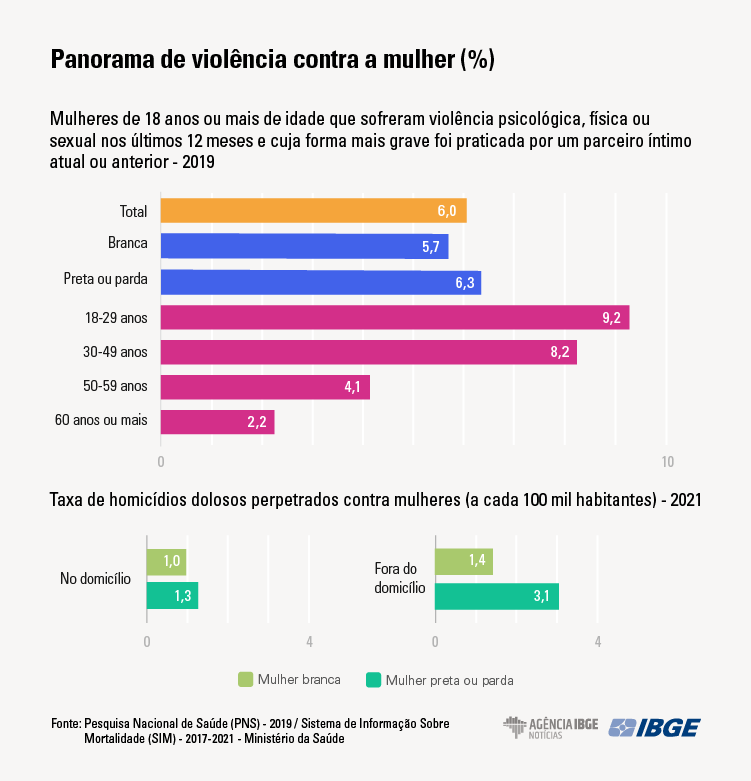
Considering the entire group of women, the rate of knavish homicides dropped over the last years. In the beginning of the time series in 2017, it was 4.7 per each 100 thousand women, dropped to 4.2 in the next year and remained stable between 2019 and 2021 (3.5 per each 100 thousand). “The most significant reductions were found in deaths occurred away from home. It may indicate that the reduction is not necessarily linked with the reduction of domestic violence, but rather with factors like the restriction of circulation in public spaces, especially in the years related to the Covid-19 pandemic,” details Soares.
Women representativeness grows, yet Brazil is still behind most Latin-American countries
The publication also highlights that the guarantee of access to power structures and to the processes of decision taking are goals both from the SDGs and MSGI. To follow it up, one of the indicators used is the proportion of seats occupied by women in the legislative houses and in the Executive Power. The study highlighted the increase from 14.8% in September 2020 to 17.9% in November 2023 in the Federal Chamber. Despite the growth, Brazil is ranked in the 133rd position out of 186 countries and it was below several Latin-American countries like Mexico, Argentina, Ecuador and Bolivia. In Brazil, women represent most of the voters (52.7%).
When analyzed the situation in the City Councils in 2023, only 16.1% of the seats were occupied by women. The representativeness was smaller in the Southeast (14.2% of councilors) and larger in the Northeast (16.9%). Concerning the highest office in the local Executive Power, women occupied 12.1% of the city halls in 2020, date of the last election. Most of them (66.9%) were white women.
More about the survey
The Gender statistics: social indicators of women in Brazil study systematizes key information to the analysis of life conditions of women in Brazil. With a triennial periodicity, the third edition of the publication brings 44 out of 51 indicators proposed by the Minimum Set of Gender Indicators (MSGI), produced by the United Nations Statistical Commission, as well as additional indicators, built due to the relevance for the Brazilian reality. Besides the IBGE surveys, the study uses, for example, bases from the Ministry of Health, Superior Electoral Court (TSE), National Council of Justice (CNJ) and National Institute of Educational Studies and Research Anísio Teixeira (INEP). The data can be checked in more details in the complete publication and in the tables.



